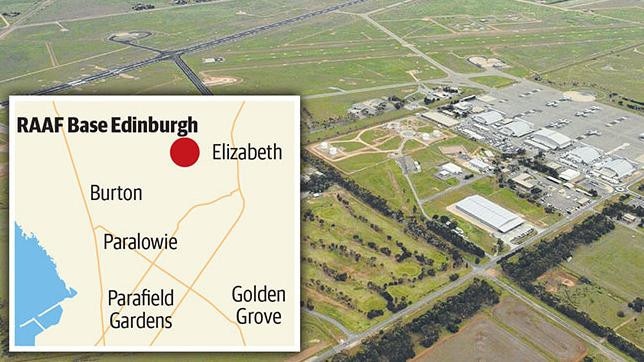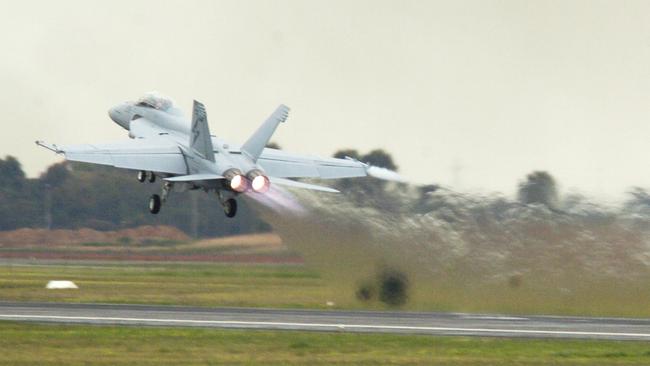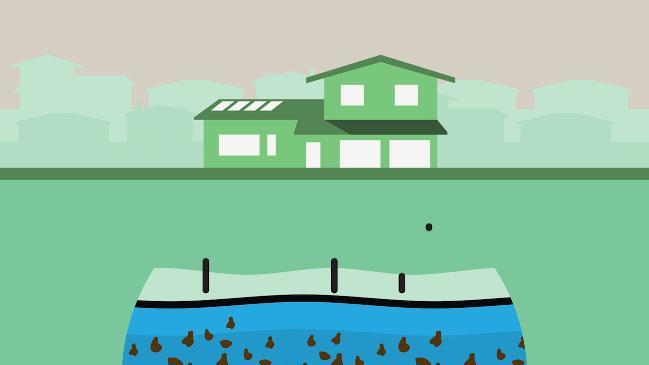Inquiry reveals high levels of contamination at Edinburgh RAAF base
Defence workers and residents have expressed deep concerns they may have been exposed to high levels of potentially cancer-causing contamination on and around the Edinburgh RAAF base.

SA News
Don't miss out on the headlines from SA News. Followed categories will be added to My News.
- New probe into airport firefighting foam contamination risksFiries ‘in the dark’ over on toxin fallout
- Cancer-causing toxins ‘leached into RAAF base groundwater’
- Nationwide defence base contamination crisis confirmed
Defence workers and residents have expressed deep concerns they may have been exposed to high levels of potentially cancer-causing contamination on and around the Edinburgh RAAF base.
The Defence Department has released the results of its 2½-year inquiry, which found Defence personnel, maintenance workers, children and members of the public might be at risk.
The probe was into perfluorooctane sulfonate (PFOS) and perfluorooctanoic acid (PFOA) contamination at the base and on nearby council-owned and private properties.
The toxins were used in firefighting foams at the Edinburgh RAAF base until 2004.
The inquiry revealed the highest concentration of contamination was on the RAAF base, while samples taken from private properties all showed levels of toxins below human health guidance values. Edinburgh RAAF base aviation firefighter Peter Morgan attended a public meeting on the matter at Smithfield Plains on Tuesday afternoon.

“We basically used (the firefighting foam), and bathed in it just about, and there’s a lot of firefighters dying (from cancer) ... so it worries me,” he said.
“I’m very worried about what my health might be in the next few years.”
Debra Mills lived across the road from the Edinburgh RAAF base, with a creek running in front of her house, for 20 years.
“We used to play down in the creek ... us and the grandkids, all the time,” she said.
The inquiry report said members of the public, people catching and eating fish and yabbies from the Kaurna Park wetland, off-site users and consumers of groundwater, Defence personnel, maintenance workers and visitors to the base, including children, could have been exposed to the toxins. People using contaminated groundwater at their homes, for commercial reasons or recreationally could also have been exposed.
Eating produce – both commercial and homegrown – irrigated with the contaminated groundwater as well as milk, eggs and livestock where the groundwater was used could also open people to contamination.

The report noted these sources of exposure were “not yet confirmed to have occurred”. It showed 27 potential contamination source areas were identified and of these 12 on-base sources represented “a significant source of PFAS contamination, where environmental sample results exceeded the adopted human health and/or ecological guidance values”.
Defence Department PFAS investigation spokesman Luke McLeod said concerned people should call the inquiry hotline on 1800 957 770.
“The primary exposure pathway is drinking contaminated water (and) we’ve got nobody on the base that drinks contaminated water,” he said.
The department will now undertake a human health and environmental risk assessment of the area.
The findings of this assessment will be released in the first quarter of 2019.
EXPLAINER
WHAT IS PFAS
■ PFAS stands for per- and poly-fluoroalkyl substances, which had been used in a wide range of manufacturing processes since the 1950s.
■ The chemicals were used in the production of non-stick cookware, the application of stains to fabric, furniture and carpets and in some industrial processes.
■ Perfluorohexane sulfonate was specifically used in sone firefighting foams, with the chemical added to improve the foam’s ability to smother fires.
■ The use of the chemicals has since been banned.
■ PFAS chemicals do not break down in the environment and can travel through water and air currents.
■ Aside from sites where firefighting foam has been used, PFAS contamination has also been found near land fill where products containing the chemicals were dumped.
■ PFAS bioaccumulates, meaning that animals higher in the food chain accumulate a high level of contamination by eating smaller contaminated animals or plants.
■ There is no definitive Australian link between the PFAS and health problems in humans despite several studies.
■ Studies of laboratory animals exposed for long periods to high levels of PFAS has indicated a link to cancer.



